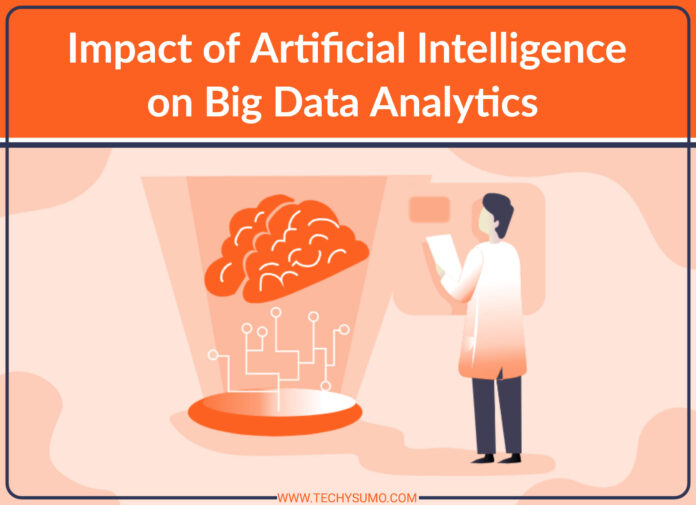Artificial intelligence (AI) and big data are two entities that drive each other. While big data is a huge variety of data, arriving in equally huge volumes and with more velocity, AI is a collection of technologies that work together to understand patterns from large data sets, interpret them as insights, and enable predictions for better decision making. In other words, AI helps you get much more value out of the data you already have and the data pouring in with each passing moment. Further, AI can analyze data from numerous sources and unify the data across sources. And most importantly, it does this at a scale and speed that does not keep you waiting irrespective of the volume of data.
To sum it up, big data and AI work hand in hand to assist businesses in anticipating market trends, analyzing consumer behavior, personalizing digital marketing campaigns, etc. Big data analytics services providers converge AI and big data to generate predictive analytics for accurate decision-making.
Table of Contents
Implementation of AI in Big Data

An AI consulting company uses AI techniques such as machine learning to parse and make sense of huge volumes of data. It recognizes patterns and trends and establishes relationships between two correlated data points in every dataset. Machine learning algorithms also use learnings from the past to determine changes in the data pattern. Natural generation language converts these data insights into easy-to-understand formats. On this note, here’s a better look at how AI can be implemented in big data.
- AI learns from human and machine interactions and uses this knowledge to read kinetic or static images to derive insights from big data. This is done via an IoT network or edge computing.
- A big data analytics company combines AI with other algorithms to sift through big data to identify specific patterns or signals that can potentially trigger a black swan event.
- AI powers predictive analytics models that analyze big data hinting at a consumer’s likes, dislikes, social activities, and others. Such insights are used to create a well-targeted digital marketing campaign.
- AI drives advanced data processing models that can read data from different contexts such as specific industries, a process, or a market. It helps to understand the interconnections between such data points from other contexts.
Impact of AI on Big Data Analytics- Use Cases
AI and Big Data Analytics in Retail

Multiple data points and advanced AI techniques such as machine learning help predict customer behavior. It can be used to create a targeted campaign or improve the shipping experience in a store or on an online platform.
As most retailers are shifting to online platforms, they are leveraging artificial intelligence, augmented reality, and big data to create cutting-edge shopping experiences for customers. A virtual fitting room is one such example of this experience. For instance, AI-powered predictive models study a particular customer’s clothing choice. These insights allow a retailer to recommend apparels that suit the customer’s choice.
AI-powered big data analytics help to create smart supply chains and forecast inventory levels and demand in real-time.
AI and Big Data Analytics in Healthcare

AI and big data empower patient self-service through chatbots. Machine learning algorithms and natural language processing analyses a patient’s unstructured history data to predict their vulnerability to life-threatening ailments such as cardiovascular disease, cancer, among others.
A big data analytics company was reported to have used AI techniques to process clinical data and identify hidden data patterns that can reveal the onset of cancer.
Here are 6 reasons to choose data analytics degree.
AI and Big Data Analytics in Finance

When big data is treated with machine learning models, it delivers critical insights into factors like stock selection and portfolio allocation. It makes the asset manager’s job a lot easier.
Big data analytics services providers use cutting-edge AI techniques such as deep learning, evolutionary computation, probabilistic logic, among others, to enable the if/then thought process to execute trades in an open market with minimal to no human intervention.
In combination with behavioral sciences, AI creates regtech and suptech technologies that help financial institutions conduct risk management and have better internal control of employees.
Conclusion

AI and big data are becoming mainstream in every business sector with every passing day. However, the lack of skilled analysts and the capital to invest in the necessary tools often discourage enterprises from reaping the benefits of big data. Such enterprises should outsource their requirements to a big data analytics company. It can be a huge cost-benefit for enterprises as they are exempted from the recurring expenses on an in-house team of data scientists and engineers and the required tools.


























